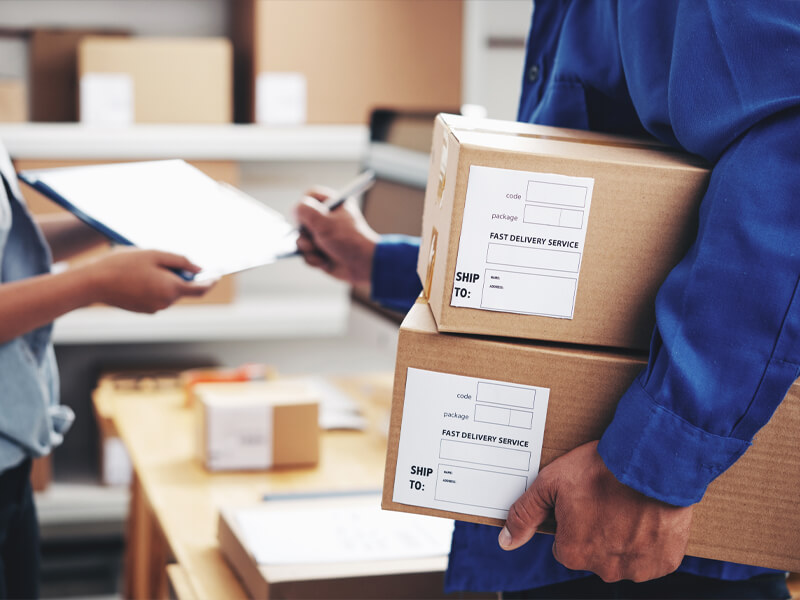Simplifying Procedures: The Power of a Trusted Processing Company
Simplifying Procedures: The Power of a Trusted Processing Company
Blog Article
Efficient Industrial Recycling Solutions for Lasting Packaging: A Comprehensive Overview
That's where this detailed guide on efficient commercial recycling solutions for lasting product packaging comes in. By discovering essential locations such as packaging material selection, designing for recyclability, carrying out recycling infrastructure, collaborating with reusing partners, and tracking and measuring recycling success, this guide will equip you with the knowledge and devices needed to make informed choices and drive favorable adjustment within your company. Whether you're a packaging specialist, sustainability manager, or just interested in the subject, this overview will offer useful understandings and techniques to aid you navigate the world of lasting packaging.
Product Packaging Product Option
The choice of product packaging materials plays an important duty in making sure the sustainability of industrial reusing services. The choice of materials is essential in minimizing environmental impact and making the most of reusing performance when it comes to lasting product packaging. Choosing the ideal materials can help minimize waste generation, save resources, and promote a round economic climate.
One crucial factor to think about in packaging material option is recyclability - plastic container manufacturer. Materials that can be easily recycled and integrated back into the production cycle are preferred. Products like cardboard, paper, glass, and specific types of plastics can be reused multiple times without shedding their high quality. On the other hand, materials that are difficult to reuse, such as blended plastics or non-recyclable composites, can produce obstacles for the reusing process and may end up in incinerators or garbage dumps.
Another factor to consider is the usage of renewable and eco-friendly materials. Packaging made from renewable energies, such as plant-based plastics or biopolymers, can assist lower reliance on fossil gas and reduce climate adjustment. Additionally, biodegradable products damage down normally in time, lowering the build-up of waste in land fills.
Moreover, the weight and quantity of packaging products should be decreased to lower transport prices and power intake. Lightweight products not only require less resources throughout production yet additionally add to lower carbon exhausts during transport.
Creating for Recyclability
Packaging designers ought to focus on the use of products that are commonly accepted for reusing and have established reusing frameworks. Materials such as glass, light weight aluminum, and certain kinds of plastic, like Family pet and HDPE, are typically recycled and ought to be liked over materials that are hard or costly to recycle.
Another crucial factor to consider in developing for recyclability is the elimination of unnecessary components or products. By decreasing the variety of layers, finishings, and added elements, product packaging can be made easier and less complicated to recycle. Additionally, developers must aim to reduce using combined materials, as they can complicate the reusing process.

Implementing Recycling Infrastructure
Reliable application of recycling infrastructure is critical for the success of commercial reusing solutions. Without proper facilities in location, the reusing process comes to be inefficient and inefficient, hindering the general goal of sustainable packaging.
To implement recycling facilities efficiently, a number of key variables require to be thought about. There ought to be a well-organized collection system that assists in the separation and collection of recyclable products. This can consist of assigned reusing containers in public rooms, along with partnerships with waste management firms for curbside pickup and sorting.
When accumulated, the recyclable products require to be moved to reusing facilities in a prompt way. This calls for reliable logistics and transportation networks, ensuring that the products reach the suitable facilities without hold-up.
At the reusing centers, progressed sorting and handling innovations should remain in area to separate different kinds of products effectively. This consists of making use of automated arranging devices, optical scanners, and hand-operated sorting methods.
In addition, there need to his comment is here be a durable market need for recycled materials. This can be achieved through collaborations with suppliers and sectors that make use of visit site recycled products in their production procedures. Creating a stable market for recycled products incentivizes the reusing sector and promotes the circular economic climate.
Working Together With Recycling Partners

One trick aspect of working together with recycling companions is the facility of clear communication channels. It is necessary to establish open lines of communication to help with the exchange of details, updates, and feedback. This allows both events to stay educated about the development of reusing campaigns and resolve any kind of obstacles or concerns that might develop.
In addition, partnership can entail collaborations in executing and developing reusing programs. Recycling partners can give valuable understandings and support in establishing reliable collection systems and establishing the most ideal recycling modern technologies. By collaborating, companies and reusing partners can optimize the recycling procedure and lessen waste.
Additionally, partnership can prolong past the functional facets of recycling. It can also encompass campaigning for and education and learning efforts. By signing up with forces, services and recycling companions can raise recognition regarding the relevance of recycling and click this link advertise the fostering of sustainable packaging techniques amongst customers and various other stakeholders.
Tracking and Measuring Recycling Success
To guarantee the effectiveness of industrial recycling services and the success of sustainable packaging objectives, it is essential for organizations and their reusing partners to establish a comprehensive system for monitoring and gauging reusing success (plastic container manufacturer). Tracking and determining reusing success allows services to assess the effect of their reusing efforts, determine locations for improvement, and established significant targets for future progress
One way to track reusing success is via making use of data collection and analysis tools. By gathering data on the quantity of packaging waste created, the portion of waste that is recycled, and the sorts of materials being reused, businesses can acquire useful insights right into their recycling efficiency. This data can then be analyzed to identify patterns, patterns, and locations of inefficiency.
An additional essential facet of monitoring and determining recycling success is establishing clear and standardized metrics. This allows services to contrast their performance against industry standards and track their development over time. Metrics such as reusing rates, waste diversion rates, and greenhouse gas exhausts can offer a quantitative action of an organization's recycling success.

Conclusion
In verdict, carrying out reliable industrial recycling solutions for lasting packaging calls for cautious factor to consider of product packaging product selection, making for recyclability, applying reusing infrastructure, collaborating with reusing companions, and tracking and determining reusing success. By incorporating these techniques, companies can add to a more lasting and environmentally-friendly strategy to product packaging, lowering waste and advertising the circular economic situation.
By checking out vital areas such as packaging material selection, designing for recyclability, executing recycling framework, working together with reusing partners, and tracking and measuring reusing success, this overview will furnish you with the understanding and tools necessary to make enlightened decisions and drive favorable adjustment within your organization. Packaging developers must focus on the use of products that are widely approved for reusing and have developed reusing infrastructures.Collaboration with recycling partners is vital for the effective execution of commercial recycling remedies and the accomplishment of sustainable product packaging goals. By joining forces, companies and recycling partners can increase awareness concerning the value of reusing and promote the adoption of sustainable product packaging methods amongst customers and other stakeholders.
By accumulating information on the amount of packaging waste generated, the percent of waste that is reused, and the types of products being recycled, companies can obtain valuable insights right into their recycling efficiency.
Report this page